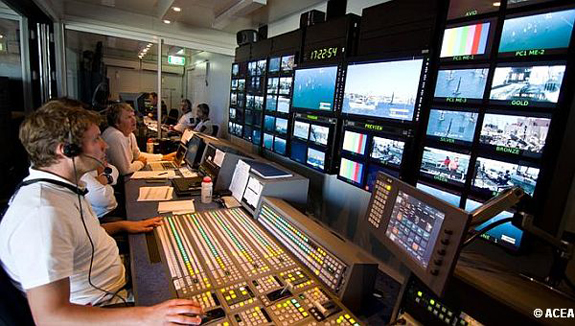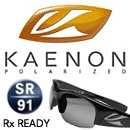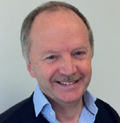
|
|
Scuttlebutt News:
The broadcast ability of the 34th America’s Cup has been presented as a significant priority. But while the magazine show - America’s Cup Uncovered - has been crisp and professional, the broadcast of the inaugural America’s Cup World Series event in Cascais was much less so. With the next America’s Cup World Series event in Plymouth, UK on September 10-18, Scuttlebutt checked in with Gary Lovejoy, head of America’s Cup TV, for an update: In Cascais, we had the opportunity to see all of the pieces come together for the first time and are pleased with our first go. It was a great learning opportunity as we tried different camera angles, commentator combinations and the incorporation of the onboard footage into the broadcast for the first time. We have a number of learnings from our team and from the input of viewers, which we will be incorporating into our Plymouth broadcast. We appreciate that your readers have been very vocal, on what they like and don’t like. So we want to say right up front, we actively encourage viewers to keep feeding us this input through our Facebook page, Twitter feed or to the team at America’s Cup TV at actv@americascup.com. We had several things that worked very well on the behind-the-scenes side that will really set us up for success in the long-term. Our overall goal is to create greater interactivity for the viewer, so this is a growing process. Where we start today will not be where we end up in 2013, as we seek to add in new elements, new technologies and continued feedback from viewers. Our starting point is a significant investment in the production side of the house so we can bring the action to the viewers by bringing them right onto the boat. We believe this is critical to growing our sport, because it allows viewers to connect directly with the athletes. This is where the onboard cameras and mics come into play, and we were really happy with the images and sound that was captured. The feedback from viewers has been very strong, particularly with the onboard footage. We've assembled a strong production team who has experience not only in sailboat racing, but also new blood with people experienced in action sports. Our director comes from motorsports, so he knows how to capture fast machines. Some of the people handling our replay systems are from Grand Slam tennis and Formula 1. But these changes will take a little time to bed down. Like with any new team, we need to build a working rhythm that will help us tune up the broadcast and bring it to life better for the viewer - tying the graphics better to the commentary, providing the right mix of onboard commentary vs live commentary, showcasing more of the fleet. This is a focus for Plymouth. We're also very pleased with the LiveLine technology that was unveiled in Cascais. For the viewer, the LiveLine superimposed graphic elements really did help as technical aids, such as the zone lines so viewers knew who had the right-of-way at the gates. But what many people don’t know is that it is also the backbone of the race management systems, so the starts, finishes, mark changes and umpire calls are the most accurate they've ever been. You can’t physically see this part of the system, but what this means for the viewer is that the racing starts and finishes on time, and you know who the winner is on the water, instead of waiting for protest meetings to end on shore. This is a big change for our sport - to have that level of predictability in a sport that is driven by variables. LiveLine is also set up to help our commentators to better deliver the story, so we’re also focused on how we can better use this tool with our commentators. We have a squad of commentators that we’re testing - they will all do at least one event in 2011. We’re looking for who connects best with the audience, which teams have the best chemistry and who can deliver commentary that is a real compliment to the overall production, and not a distraction. For Plymouth, we’ll have four commentators back from Cascais: Rob Brown (AUS), former America’s Cup winning trimmer; Geordie Shaver (USA), former America’s Cup bowman; Mark Heeley (GBR), former America's Cup sailor; and Peter Rusch (CAN), AC32 radio commentator. And we’re adding two new members - Annie Gardner, who sailed as part of the America3 challenge; and Mitch Booth, two-time Tornado Olympic medalist. Our viewers wanted a commentator with strong catamaran experience, so we’ve brought in Mitch for Plymouth with his firsthand AC45 experience. Commentators are a key element to of our broadcast strategy. Many are starting as amateurs but were picked for their potential. We want to develop our own team, mixing the levels of experience so we can have a fresh perspective on the racing. As we reach out to new audiences, the commentators must be part-enthusiast, part-educator and part-storyteller. And part of reaching new audiences is having a variety of perspectives. Our first few broadcasts featured just one commentary track and we were trying to balance between educating audiences new to the sport while keeping our core sailing audience engaged. But we really weren’t meeting the needs of the sailing audience, so we introduced the multi-screen player as part of our new partnership with YouTube. Now, we can offer audiences more choice, which is really important as we work to introduce more people to the sport of sailing. Viewers can now choose their video option as well as their audio stream. We have a sporting commentary stream that is designed for those newer to sailing - it is more educational in its delivery - while the sailing option is available for those want a more technical commentary. We have studied several alternatives including gliders, airships and tethered balloons but nothing can get the kind of shots that helicopters provide. Plus, the extra speed of the AC45s means they are even more demanding to cover from the air, so we need the flexibility that a helicopter brings. We also use the helicopters for LiveLine, which relies on an overhead view to do the graphic insertions, or lines that people can see on the broadcast. In addition to a few new faces on the commentary squad, you’ll see us continue to play with different camera streams. We have so much footage to pick from - with multiple cameras on every boat, on-water cameras, on-land camera and helicopters cameras, plus Virtual eye - that we must continue to work on grabbing the right elements to tell the story of the race and the athletes. For example, we did a good job of showcasing the winners of the races, but viewers also wanted to see more of the action when the mid-fleet boats were duking it out at mark roundings, so we’ll continue to work on that balance. In Plymouth, we will be concentrating very much on the principle of a "field of play.” Most sports have a discernable area where the sport is played, unlike sailing, so by sailing in natural stadiums like Plymouth, and having an identifiable and marked zone makes the sailing so much easier to follow. This is something very new for our sport, so we are getting used to both projecting it and talking about it. Another area of focus for us. Also, there is more to come with LiveLine. A lot of work has gone into LiveLine and it will continue to be developed and improved over the next two years. It is doing a great job for us already, but there is more to come for both our team and the viewer. Overall, we want to continue to improve our storytelling and this will be an area of focus all the way up to the 2013 events in San Francisco. Similar to what we are doing with America’s Cup Uncovered, we want to reveal these athletes to the viewers - their personalities, their race strategies, the team dynamic. We have the tools so now we’re focusing on learning them, fine-tuning them and really maximizing them so we can get people excited not only about the America’s Cup, but ultimately, excited about the sport of sailing as a whole. We truly believe that this America's Cup has the components - from the boats to the teams to the technology to the imagery to the events - to draw in large global audiences and we're focused on developing technically excellent and compelling coverage. We improved day by day in Cascais, and we will continue to push the boundaries of televised sailing coverage over the next two years, with innovations such as LiveLine. We're happy with our first start out of the gate and look forward our next opportunity in Plymouth, starting September 10.  August 31, 2011 back to top |







|


